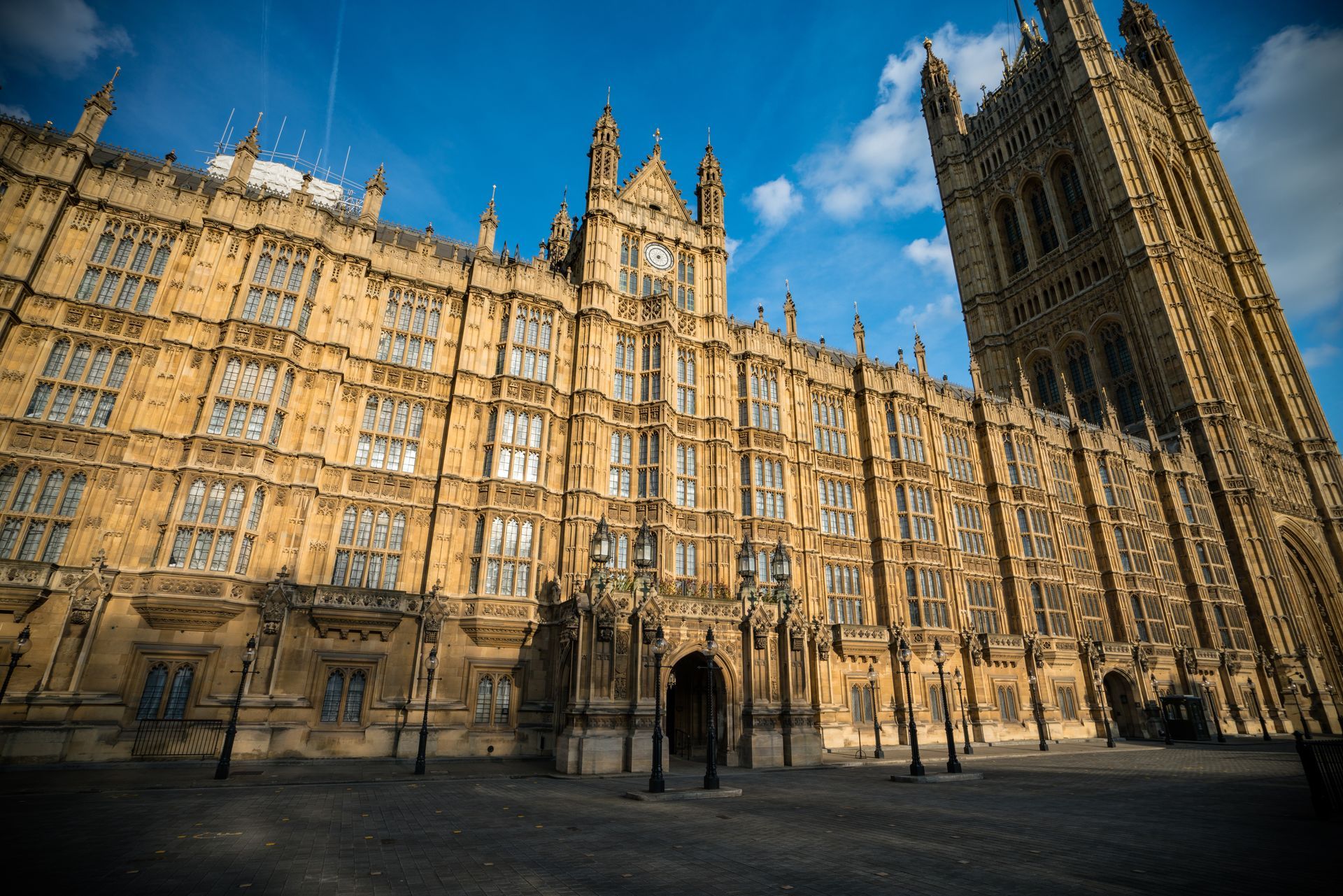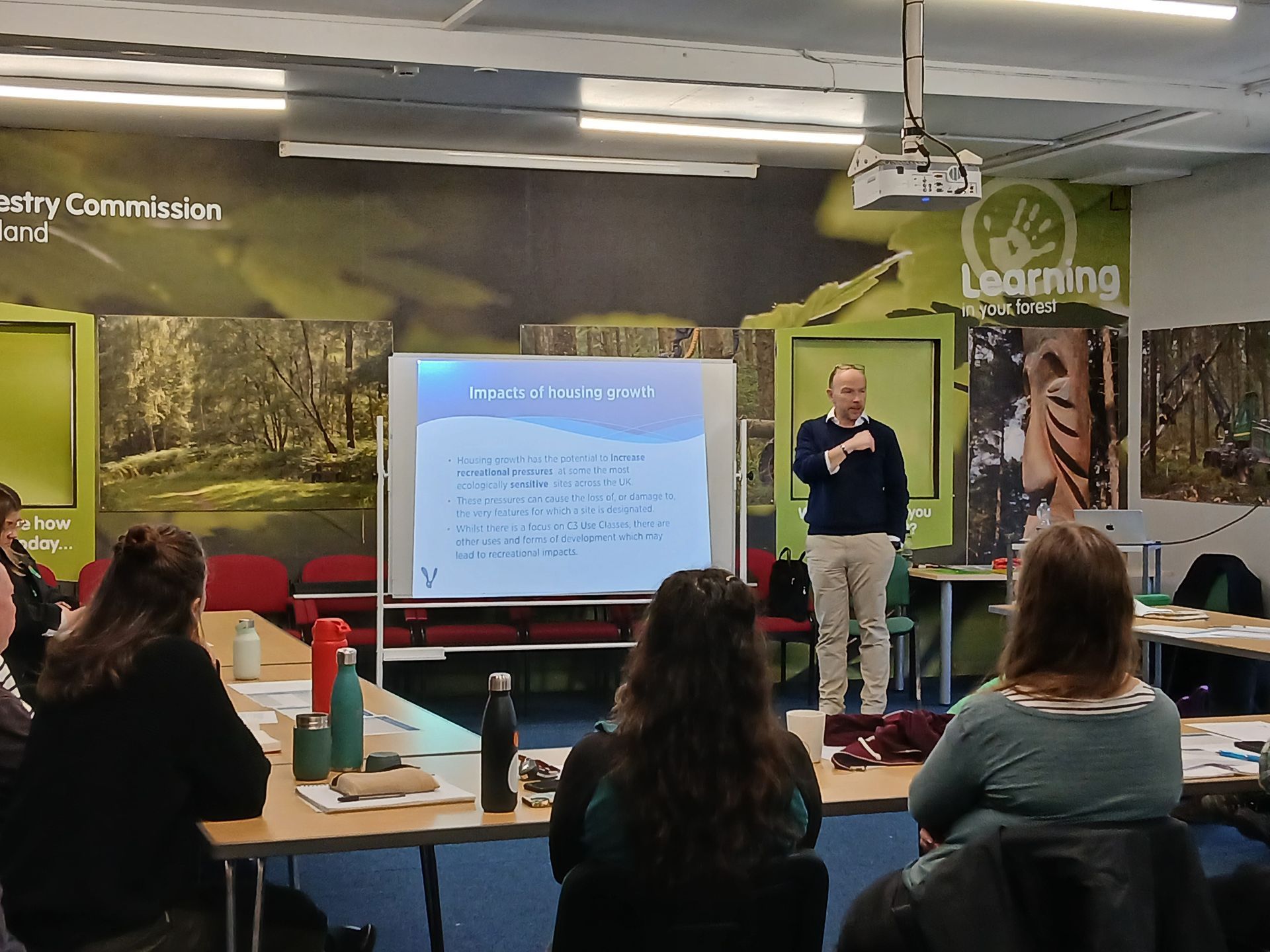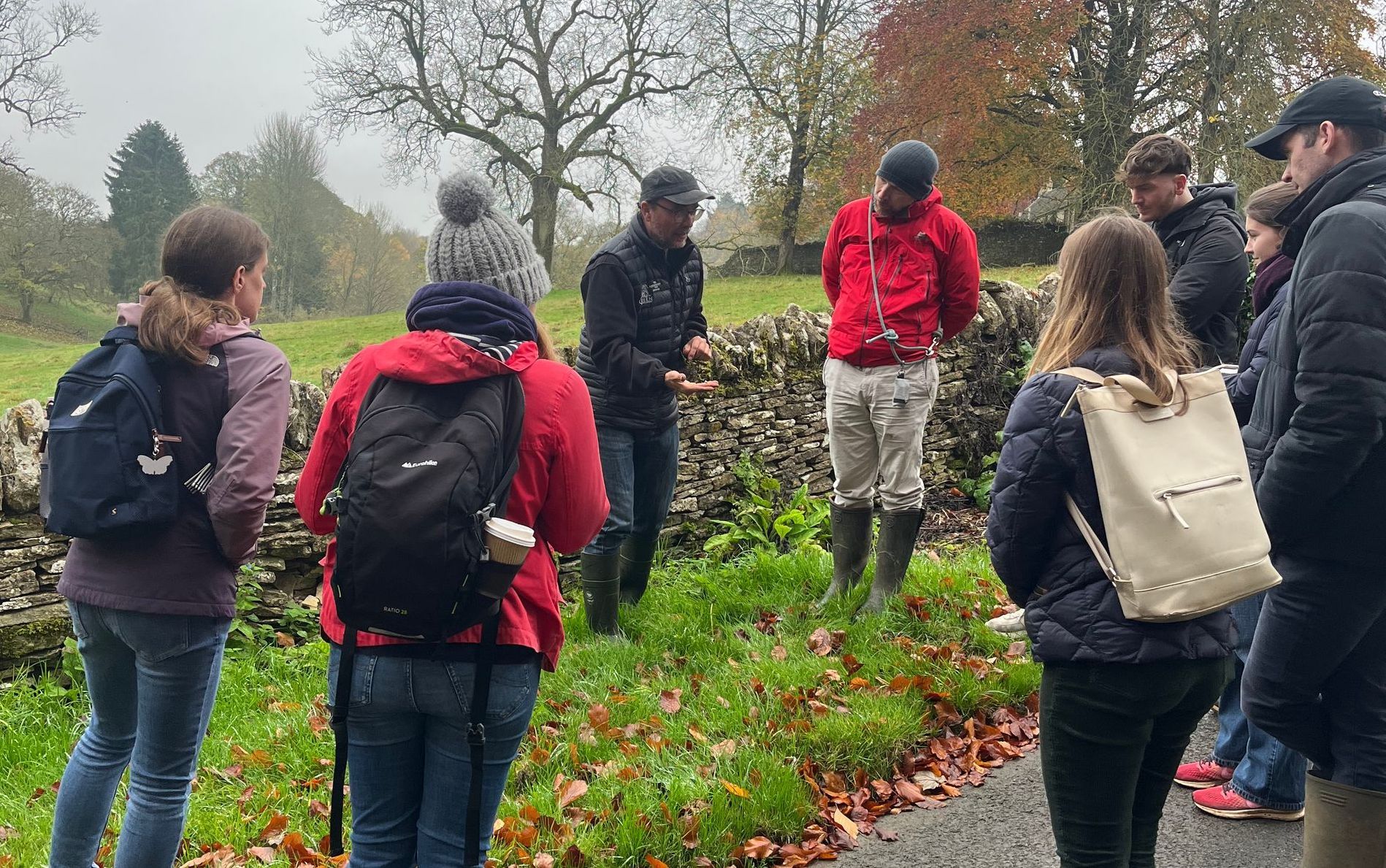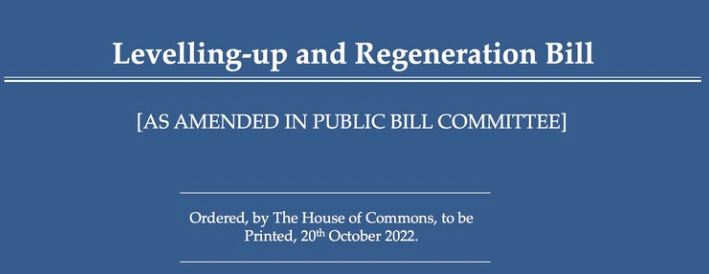Implications of the Levelling Up and Regeneration Bill (LU&R) for Strategic Environmental Planning and Assessment
Word cloud illustrating contemporary environmental issues and initiatives that are relevant to strategic environmental assessment and sustainable development.
Summary
This article discusses plan level environmental assessment. It is a snapshot review of the current Sustainability Appraisal and Strategic Environmental Assessment processes which are used to evaluate local plans in terms of sustainability performance. It welcomes the proposed government review of these processes and advocates improved approaches to the collection of baseline information so that ecosystem functions are not degraded, lost, or overlooked. Environmental assessment and planning should provide the opportunity to understand environmental systems better before preparing plans that introduce development based on housing number calculations that seemingly do little to factor in environmental considerations.
How might a new approach lead to improved environmental outcomes for land use planning in England?
Having spent some 17 years involved with the strategic environmental assessment process as well as the sustainability appraisal process associated with the preparation of local plans, I would say that a structural review of their effectiveness and current practises is long overdue.
Presently, the government wishes to reform both of these high level assessment processes as part of proposals laid out in the Levelling Up and Regeneration Bill.
The government has explained that it intends to run a series of consultative exercises in order to help inform the review of these strategic processes. A statement at the start of the bill reads, ‘the Bill will not have the effect of reducing the level of environmental protection provided for by any existing environmental law’.
Phew! That’s a relief. Or is it? One immediate question is how effective is current environmental law? And should we not be mindful of the fact that the law is simply a blunt tool that obligates action; environmental protection is far more than this. It is a blend of community actions, which include as a minimum, positive land management practices that balance food production with resilient ecosystems that support biodiversity and well-being, it is good communications, it is inspiring and helping everyone appreciate that the environment needs managing and protecting. The answer to this will no doubt be one of the starting points for the structural or ‘deep dive’ review of the processes.
The challenge, presumably, is how will the government address this apparent paradox? Committing on the one hand to ensure that there will be no reduction in environmental protection yet on the other hand seeking to remove current requirements to undertake environmental assessment. Solution? Conduct a deep dive analysis of present effectiveness and then make suggestions for change. So why has the government decided to put the horse before the cart? Discuss, 20 marks, 2000 words.
Planning Practice Guidance (PPG) advocates a combined approach to preparing sustainability appraisal and strategic environmental assessment of local plans. PPG states that ‘Strategic environmental assessment considers only the environmental effects of a plan, whereas sustainability appraisal considers the plan’s wider economic and social effects in addition to its potential environmental impacts. Sustainability appraisal should meet all of the requirements of the Environmental Assessment of Plans and Programmes Regulations 2004, so a separate strategic environmental assessment should not be required’.
But isn't this a bit messy? Why do we have two assessment processes that are, on the face of it, very similar? And if so, is such duplication effective?? Is it required??
And, if the sustainability appraisal can include all the requirements of the SEA process, why bother to have the Strategic Environmental Assessment regulations in the first place? Answer: The Strategic Environmental Assessment process applies to a much wider range of plans and programmes than simply local plans.
Sustainability Appraisal is a loosely defined, openly interpreted entity which, by association with the SEA requirements, has morphed into something of a monster since it first appeared in s.19 of the Planning and Compulsory Purchase Act 2004. Legal battles about what exactly constitutes a reasonable alternative, and how they should be assessed, have arguably led SA practitioners to be extremely precautionary in order to minimise the risks of legal challenge. The government recognised a similar issue with Habitats Regulations Assessment in section 3.2 of the March 2022 Nature Recovery green paper: protected sites and species. SA reports can now run to hundreds of pages. But the real risk is that despite their voluminous presence, they are not diagnostic or effective enough at appraising effects because the SA is only ever as good as information that has been used to perform the assessment.
The Strategic Environmental Assessment process, on the other hand, is carefully set out by the way of procedure based in the original European Directive and now the UK regulations. The Strategic Environmental Assessment process defines a range of environmental topics that must be explored and evaluated as part of a wide range of sectoral plans or programmes which are deemed to have significant environmental effects. Used correctly, SEA has the potential to act as an influencing tool to maximise multifunctional environmental net gain.
The reality is that the sustainability appraisal process and the strategic environmental assessment processes, as applied to local plans, have never really been carefully thought out. The two pieces of legislation came in almost at the same time (2005 and 2004 respectively) under familiar conditions whereby Europe takes one approach and the UK Government takes another. Taken at face value, both have similarities, however the SEA Directive is more clearly defined and identifies quite clear requirements for the assessment process.
Practitioners will be well aware that a criticism of the sustainability appraisal process is that in attempting to appraise social, economic and environmental attributes it serves as a mechanism for trade-off that can facilitate development at the cost of environmental impacts. Occasionally, it works the other way around.
Another weakness is that the SA process only uses secondary data and has been described politely as ‘passive’ because it works only at the desktop level. Consequently, outputs are constrained by the quality of datasets and information.
Perhaps its greatest flaw of all is the way in which it seeks to analyse numerous small potential development sites as part of the reasonable alternatives process which is undertaken when a local plan is prepared. The Sustainability Appraisal often duplicates work that has already been undertaken by the planning policy team since the same or similar datasets are used. But it should be remembered that the SA team, if external, will be effectively reviewing the Council’s work and to do so, must ensure they are familiar with the data that has been used to undertake the appraisal and therefore why not produce an assessment as well? Add to this the consistency of appraisal method across a large number of sites and a benefit of the process emerges. This is one reason that SA reports become so large.
Anybody who has appeared at an Examination in Public to support a local planning authority through the hearing stages that deal with SA in the early part of an Examination will be familiar with the debates that take place around sites. It is literally a David and Goliath experience in which the SA process (David) will have evaluated a potential allocation (reasonable alternative) site in the SA process using desktop information whilst the site promoter may have 5-10 environmental reports relating to ecology, noise, water quality, transportation, landscape etc. At this point, the SA process makes polite overtures and bows out of the debate because we are simply not comparing apples with apples anymore. It is worth noting that such reports are all likely to include primary survey data and the price of the single site environmental reports together might possibly cost more that the entire SA!
In short: environmental baseline information is critical. The SA process is too high level much of the time. I would prefer to see a process of plan making that, from the outset, establishes which evidence is to be collected and what level of evidence will be acceptable, before any assessment work takes place.
It is through its alliance with the Strategic Environmental Assessment process, which requires that high level environmental protection is delivered along with transparency in the environmental assessment process, in other words consultation, that the sustainability appraisal is a useful tool to raise sustainability issues that might not otherwise be identified during plan making. It provides an opportunity for council members, officers, communities and developers alike to focus upon particular issues that they might not otherwise have considered. In other words, it avoids death by a thousand cuts. It hardly ever identifies or unearths a significant hitherto unheard of issue that no one was previously aware of.
A brief history of environmental law making
It is apparent, in the case of local plans, through the introduction of the sustainability appraisal process that the UK Government possibly never wanted to embrace the strategic environmental assessment process in the first place. Just as the UK Government did not wish to introduce the assessment of plans and programmes through the Habitats Directive. Even though it was quite clear in the Habitats Directive that there was a requirement to do so; the UK government only introduced the assessment of plans and programmes through the Habitats Directive having been obliged to do so via the European Court of Justice in 2005.
These matters all lie in the past. And we as a nation are no longer part of the European Union, we no longer benefit from the strategic insights that are gained through international cooperation on cross border matters in the same way that we once did. European legislative initiatives relating to environmental matters such as biodiversity, climate change, water quality and air quality to name a few of the examples that were relevant to spearheading environmental protection in the UK, are no longer something that we will be bound by nor can we rely on. We are instead in the hands of the UK Government; and they are calling the shots over this current review of environmental assessment of plans (and projects) as part of the LU&R Bill.
For decades, the UK has embraced environmental protection via legislative means. From the 1949 National Parks and Access to the Countryside Act to the 2021 Environment Act, the country has a statute book designed to protect and enhance the environment.
The question about whether or not the legislation is effective in protecting the environment is a difficult one. To review legislation in isolation would be narrow- minded and unhelpful. After all, it should be remembered that the legal basis for environmental protection is to regulate matters and not leave important aspects of environmental protection down to simply best practice, goodwill and behavioural attitudes. Environmental protection is much more about understanding the environment in the first place and managing it to ensure that intrinsic ecosystem function qualities are not lost, or overlooked, become extinct, and that we understand environment systems.
The LU&R Bill proposes that the current environmental assessment processes are replaced with an Environmental Outcomes Reporting system (EOR). There is little more to be said about this at the present time, since the government have offered no insight as to what they mean by this. Some commentators have expressed the view that sustainability appraisal should simply be an audit that can be undertaken at the end of the plan making process. This absolutely is not how it should work purely because if changes are required the plan will most likely be like a house of cards at this point, with proposals baked into the process that are impossible to extract without significant re-working. Yet the suggestion that the sustainability appraisal is more of an audit than an assessment makes sense. So, why was it not left to function in this way? Who was it who thought merging SA with SEA was a good idea?
Perhaps this is what the government has in mind when it talks of Environmental Outcome Reporting. In which case, how will it be possible to demonstrate that a plan has optimised sustainability performance and minimised environmental impact in order to determine environmental outcomes? The answer I feel is to ensure that there is a robust environmental baseline that has been assembled for the plan making process. Primary collection of real-time data is important to evaluate with sufficient confidence and granularity the environmental impacts of plan proposals. Currently this is lacking and the long held response of ‘high level environmental protection’ sounds limp and over-used. High level environmental protection should really mean continuous, effective and well-funded monitoring streams to help inform, strategically, the state of the environment. This need not be especially expensive and the key is to perhaps ensure that monitoring plays a role so that once we have carefully conducted the place making plan, the proposals can be monitored to ensure the desired and predicted effects evolve as they were envisaged to.
From this point, the exact requisite primary data to be collected can be identified in order for a local plan to be prepared using robust information which, in turn, will facilitate a well-informed and accurate prediction of likely environmental outcomes.
In pursuing these changes, will the government finally drop the sustainability appraisal process which has on occasion so confused the SEA process and effectively promulgated the Tragedy of the Commons as it has regularly validated trade-offs between environmental and economic benefits? In this light, the SA process can surely never succeed as an effective tool for environmental protection.
Or will the government come to appreciate that the nature of its position as part of wider plan making team, like a pilot fish alongside a shark, means that the SA process can closely track local plan progress and provide appraisal information through iteration as the plan emerges? A position that means that the SA process can encourage a rigorous identification process for reasonable alternatives is pursued. And further still, bring together the wide range of environmental initiatives, that when dovetailed and delivered together through local plan policy, can transcend the silos of their own evolution to deliver multifunctional environmental benefits.
It is vital that any the environmental assessment process used to assess plans is started as early as possible in the plan making process. It cannot wait until the end of the plan making process, the traditional stage at which outcomes are clearer.
Whilst the consultations are yet to start, an emphasis on outcomes is helpful. Links to the 25 year environment plan, its goals and indicators should serve the government well. Nevertheless, the 25 YEP is a slippery creature; it is full of positive rhetoric and would benefit from a firmer commitment to action.
It is important that reformation of the environmental assessment processes doesn’t lose direction and be so hasty that it fails to recognise the progress that has been made to date with the challenge of delivering a truly environmentally sound, plan-led system in the UK.
I look forward to taking part in the proposed consultation activities and recorded my interest in liaising with the Department as it continues with the review of environmental assessment processes, and I will look forward to seeing how the LU&R Bill makes its way through the Houses of Parliament.
My wish list for reform of the environmental assessment processes:
- Retain the requirement to evaluate the environmental impact of plans.
- Develop well defined evidence baselines that are required to undertake assessment.
- Improve the monitoring commitments to help ensure we have trend data for use in the environmental assessment process.
- Introduce a requirement for environmental reports to be prepared by Chartered Environmental Consultants.
- Introduce more consistency to the assessment process.
If you have any views or comments on this article, please use the following contact details. Thank you.
Neil Davidson CEnv MCIEEM CMLI
Director
10th June 2022
Lepus Consulting Ltd
Eagle Tower
Montpellier Drive
Cheltenham
GL50 1TA
T: +44 (0) 1242 525 222
E: Neil.Davidson@Lepusconsulting.com
More from our blog
Remaining Neutral









